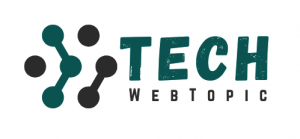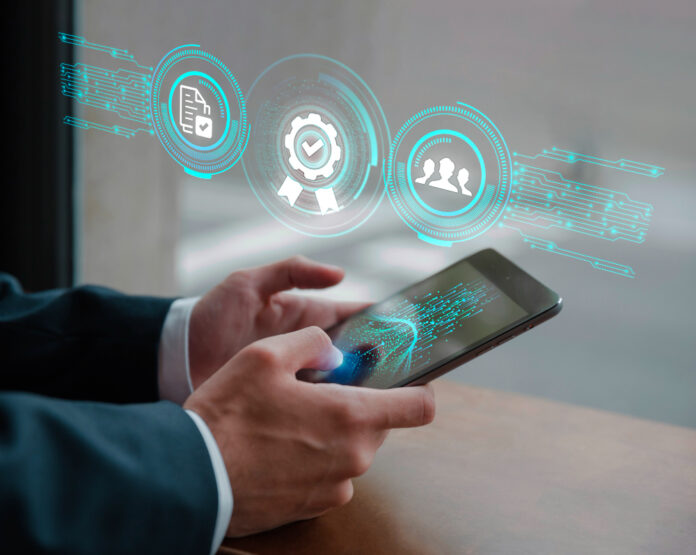In the past decade, The Internet of Things (IoT) has evolved rapidly and caused tremendous changes in many domains. Moving forward into some of the biggest changes within healthcare have been in medicine- IoT-empowered technology transformed patient services and administrative efforts. IoT has consequently cut new roadways for boosting patient results, lessening expenses and productivity of the clinical balancing it possesses like distant monitoring electronic medical devices, sharp healthcare data management, etc. To understand the impact that IoT has on healthcare, in this article we will take a detailed look at -What the Internet of Things (IoT) is its real-time use cases and the benefits associated with leveraging it for Healthcare obligations would be like to get insight into future ramifications?
Remote Patient Monitoring
One of the most popular services is remote patient monitoring (RPM) based on IoT healthcare. This means empowering connected devices to measure their health and track its changes in real time so that extended care is proactive rather than reactive. The significance of RPM has only compounded in recent years with the advances in chronic illness care, post-surgical care, and elderly patient monitoring.
Better control of chronic diseases
For Diabetes, Hypertension, and Heart Disease Chronic diseases like diabetes hypertension heart are ones that need lifelong monitoring. Connected health – With devices that can measure a person’s blood pressure, glucose level, or heart rate and communicate reports to doctors in real time. This enables interventions to be made in a more timely fashion, personalized treatment plans, and fewer visits. As an example, a diabetic individual can wear a family of products like a continuous glucose monitor (CGM) that will relay real-time data to his/her doctor and help in adjusting the insulin regimen with pinpoint accuracy.
Improved Post-Surgical Care
Patients who have recently had surgery may require precision monitoring to keep complications at bay. Vital signs, wound healing progress, and gross mobility can be monitored passively over time through IoT devices without healthcare professionals coming close or the patient having to often visit a hospital. This is not only improving patient comfort but also reducing the burden on healthcare facilities.
Independent Living and Senior Housing
Aging In Place can be more dangerous than living in an Assisted Living or Skilled Nursing environment for the elderly. There have been several IoT solutions on the market for some time that monitor basic activities of daily living and potentially detect falls (with notifications to an informal caregiver in case of a fall). This will give our seniors a lifeline, as these technologies can be there to help monitor them and keep them safe.
Smart Medical Devices
Another pillar of IoT in healthcare is smart medical devices. It comes equipped with sensors, connectivity capabilities, and advanced data analytics to bring more accurate & effective medical interventions
Wearable Health Devices
Wearable devices (like smartwatches and fitness trackers) have been trending because of the plethora of health metrics they can help you collect, including heart rate, level of physical activity, amount and quality/timing in sleep patterns, etc. These gadgets offer dynamic real-time information, devices that tell you more about your body parameters and surrounding environment translate into preventative care and early detection of symptoms or health trends.
Implantable Devices
IoT has completely transformed implantable devices such as pacemakers, and insulin pumps Today, pacemakers can send data on heart rhythm to a doctor meaning they are closely monitored and changes in treatment can be made when needed. Smart insulin pumps, that can modify the dosage of insulin delivered based on real-time continuous glucose readings could achieve better glycemic control in diabetic patients.
Smart Diagnostic Tools
Diagnostic tools were made more accurate and available (again with help from IoT). Smart stethoscopes, for instance, are able to capture and evaluate sounds of the heart (and many other organs) in real time so they can provide valuable feedback and diagnostic support. Smartphone-connected portable ultrasound devices that take and transmit images remotely could help to broaden access to diagnostic services in low-resource settings.
Enhanced Health Care Data Handling
Healthcare Data Surge: IoT device proliferation has contributed to an increase in healthcare data To enable higher patient care, better research, and effective healthcare operations this data holds significant importance but managing it efficiently is extremely important. Prior to IoT, Healthcare data management was revolutionized with several innovations introduced.
Live Management and Analytics
Always-on data streaming: Billions of IoT devices generate way too much volume, variety, and velocity in their real-time collected streams for the cloud and modern forms of static database solutions. SALAROS: TweetThis real-time flow of data enables timely patient management and improves decision-making. However, monitors that have been wired connected can track an ICU patient’s vital signs and immediately alert medical staff in case of readings that may indicate any problems – ultimately saving time and increasing chances.
Integration & Interoperability
The integration of data from disparate sources presents challenges in the management of healthcare data. Interoperability -different devices and systems are integrated to interact with each other well enough that data exchange occurs effortlessly. EHRs aggregate data from wearables, at-home monitoring, as well as hospital equipment that allows for a more comprehensive picture of patient health.
Big Data and Forecasting/Amodis Widodo/Tribunnews’.
Lots of data is generated by IoT devices – a big windfall for the combination with Big Data analytics. This data can be analyzed using advanced algorithms, which help in identifying patterns and predicting health wakes as well. [12][13] What happens next are the insights that guide us to personalized treatment plans or preventive methods mentioned above. To take just one example, predictive analytics can predict which patients are in danger of being readmitted to the hospital and this enables the implementation of interventions that help prevent complications.
Security and Privacy
Because of this data collection, one related issue that has risen to the forefront is how health information should be safeguarded and also if privacy matters. Advanced encryption, secure communication protocols, and robust access controls are all part of IoT solutions for safeguarding sensitive data. Moreover, regulations such as the Health Insurance Portability and Accountability Act in the US prescribe guidelines for patient data protection.
Discussion: Challenges and Future Directions
IoT holds great potential to revolutionize healthcare, but there are still hurdles that need clearing in order for it to reach its zenith. More specific areas of concern are with data security/privacy, quality (standardization and interoperability), as well the legacy aspects associated combining IoT into existing healthcare infrastructure.
Addressing Security Concerns
IoT devices are easily hackable as they work on an interconnected basis However, achieving the security of healthcare data demands constant reviews in terms of security protocols, application of high-level types, and content for encryption as well as further training medical professionals on cyber safety measures.
Standardization & Breadth
To maximize IoT’s potential for health care, standardization and interoperability are key. Enabling these standards enables interoperability as well as will further facilitate the integration and ease of use across all healthcare systems.
IoT integration with the current infrastructure
Healthcare facilities must adopt the infrastructure that will enable them to leverage the IoT landscape. Those steps include modernizing network infrastructure, training staff to use the new technology, and developing IoT solutions that work with other healthcare systems.
Future Potential
The bright future of IoT in healthcare IoT is poised for broader use in the future, thanks to emerging technologies like 5G, artificial intelligence (AI), and blockchain that will further improve IoT applications. Faster data retrieval speeds, and improved connections using AI to enhance decision-making and analytics enhance the security of integrity within a blockchain.
Conclusion
The healthcare industry is one of the domains that sees transformation at an exceptional level because of IoT, from remote patient monitoring to smart medical devices and healthcare data management. IoT has been transforming patient results, reducing healthcare costs, and increasing the efficiency of Healthcare systems whilst enabling continuous monitoring, Personalized treatment, and improving data evaluation. The possibilities for IoT to further transform the health industry are clearly endless, as long as technology continues rapidly evolving. But to completely realize the potential of IoT in healthcare, there is much that needs doing still – and these include such challenges as security (the proper measures must be enforced), standardization issues (there should be acceptable practices followed by all stakeholders), and integration with infrastructures. An example is tractors & agriculture – the first tractor was to increase productivity and efficiency in farming, IoT will transform healthcare into an era of connected, patient-centered care.


